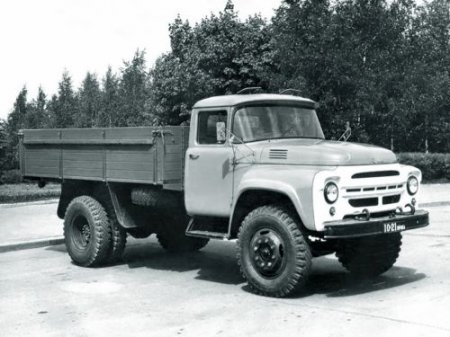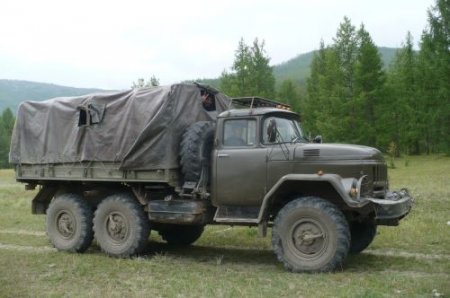
ZIL 130 in detail about fuel consumption
The ZIL-130 truck is one of the most successful models of its series, the production of which began in 1952. The fuel consumption of the ZIL 130 per 100 km is an urgent issue, because this machine is still often used for farm work. Vehicle Specifications

ZIL design
For your time the base ZIL-130 was a fairly powerful car, and it is precisely with this that the fact that the ZIL 130 has such a high fuel consumption per 100 km. The car has an 8-cylinder engine. All modifications of this model have power steering, as well as a 5-speed gearbox. It uses A-76 fuel for movement.
| Engine | Consumption (track) | Consumption (city) | Consumption (mixed cycle) |
| ZIL 130 | 25 l / 100 km | Xnumx l / xnumx km | Xnumx l / xnumx km |
Features
This design gives the following characteristics:
- power - 148 horsepower;
- compression ratio - 6,5;
- maximum torque.
How much fuel does ZIL consume?
ZIL is a dump truck, so it consumes quite a lot of fuel. Fuel consumption by ZIL 130 - 31,5 liters according to official data. This figure is indicated in all documentation, however, it corresponds to reality only when the machine is relatively unloaded and in good condition. And yet, it is more interesting to know what the real fuel consumption of the ZIL 130 is.
Increasing the rate
There are circumstances under which the average fuel consumption at ZIL increases for every hundred kilometers.
This could be the time of year.
This is due to the fact that the engine needs to warm up and part of the energy is spent on maintaining the temperature.
Now let's get real about how the costs are going up.:
- in the southern regions, the change is insignificant - only about 5%;
- in the temperate climate zone, there is an increase in fuel consumption by 10%;
- a little to the north, the flow will already increase to 15%;
- in the Far North, in Siberia - up to 20% increase.

With this data at hand, it is easy to calculate how much gasoline is consumed on a ZIL 130 in winter. For example, if you calculate (take the norm as a basis - 31,5 cubic meters), then for a kilometer distance in a temperate climate in winter the car will spend at least 34,5 cubic meters of gasoline.
Linear fuel consumption also increases with increasing mileage - engine wear. Here the statistic is as follows:
- new car - mileage up to 1000 km - increase by 5%;
- with each new thousand km run - an increase of 3%.
Fuel consumption varies depending on the terrain in which you are driving. It's no secret that the fuel consumption of the ZIL 130 on the highway is less than the norm, and usually amounts to 28-32 liters for every 100 km. You have to stop less on the highway, the road is better there, you can gain stable momentum and not overwork the engine. Cars of this brand most often move along the highway, because trucks of this type are designed to move goods over long distances.
According to drivers, fuel consumption rates for ZIL 130 in the city are increasing significantly. The dump truck has to constantly maneuver, stand at traffic lights, pedestrian crossings, keep a speed that is not as high as it could develop on the highway, which is why gasoline consumption is growing. In urban conditions, it is 38-42 liters for every 100 kilometers.
Fuel economy
Prices for gasoline and diesel do not stand still - they are rising every day. Drivers, in order to save their money, have to come up with special tricks to save money. It "eats" a lot, and the transition to gas will be inefficient. Some of them are used for ZIL-130.
- ZIL consumes fuel without significant increases, which is in good technical condition, especially the condition of the engine, carburetor, vehicle ignition system.
- Fuel consumption can be reduced by taking a few minutes in winter to warm up the engine.
- The driving style of a person behind the wheel can also affect the fuel consumption of a car: you should drive more calmly, avoid sudden starts and stops. Consumption is also lower when driving faster.
- If possible, avoid busy streets in the city - the consumption of gasoline on them increases by 15-20%.
